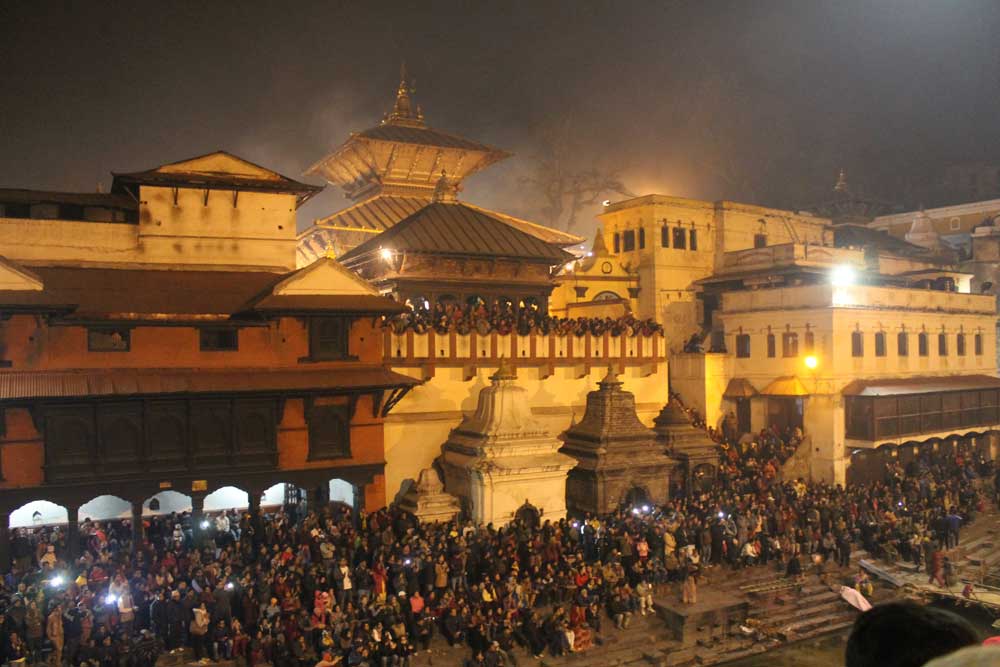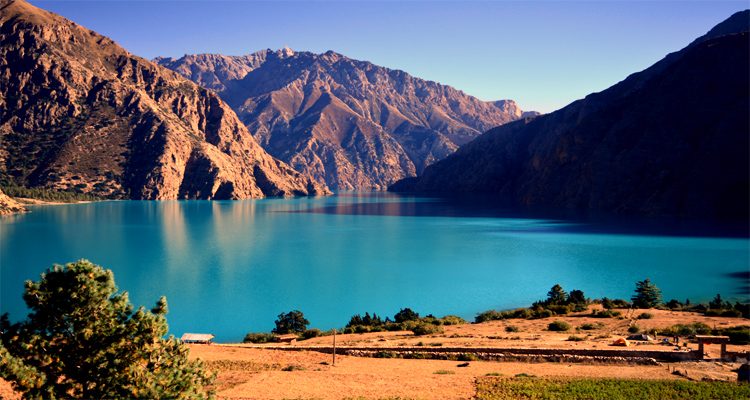The valley of flowers Dolpo with the most charming landscapes in the country has the power to bewitch you. The area is fully surrounded by bon religion so this is also called Bonpo sanctuary trek. You can access the virgin hills and mountains with a special permit. The Dolpo region is surrounded by glistening Dhaulagiri Mountain and is cut off from the rest of Nepal by perennial snow. The villages of Dolpo are perhaps the highest settlements on the planet. Dolpo has the widest variety of animals including Blue sheep, Brown bear, Antelopes, Snow leopard and so forth. You can also find a variety of fauna including medicinal herbs. The economic activities of people involve: cultivating barley, raring mountain goats, sheep and yaks. Many people of this region are also involved in traditional art of making Thangka paintings.


The Dolpo Region has a heavy influence of Tibetan culture. People in this area follow Bon religion. It is said that Lord Buddha had mentioned that one can achieve salvation by solitary meditation in Dolpo. If you are looking for spirituality you should visit Dolpo once in your lifetime. It will rekindle your spirit and bring you closer to nature. Pack your trekking shoes and head to this isolated land to rekindle your spirit and experience nature at its best. One of few last regions where Bon Religion still exists in its primitive form is Dolpo. Some of the Bonpo Monasteries in Dolpo are the oldest existing ones. Bon was the prevailing religion in Tibet before the majority of Tibetans adopted Buddhism.
Though Bon and Tibetan Buddhism existed side by side for ages, the present form of Bon adapts the fusion form of Bon and Buddhist principles hence; the indigenous form of Bon seems to fade out. The origin of Bon Religion relates to the myths of sacred figure Tonpa Sherub who lived in Western Tibet. Bon emphasis its religious grounds more on spirits and deities rather than philosophy and hence the religion is sometimes regarded as Shamanism. The Bon practices are the key factors that differentiate the religion with Tibetan Buddhism. Circumambulating the shrine anti-clockwise unlike Buddhists undertake the process clockwise.
Similarly, revolving the prayer wheel to left and inscribing swastika to the left are Bon’s practices whereas; Buddhists perform these rituals to the right. In addition, the mantra of the Bon is “Om Ma Tri Mu Ye Sa Le Du” but the Buddhists chant “Om Mani Padme Hum”. Bon also distinguishes itself from Buddhism in interpreting ancient teachings, religious dance forms, costumes and masks used during ceremonies and the patterns of religious paintings and statues. Explore Dolpo’s Bon Sanctuary Trek takes you to the several fascinating Bon Monasteries of Dolpo.
Dolpa is generally reached via Nepalgunj, a city located in the lowlands of Terai close to the Indian Border in South Western Nepal. After breakfast we depart from Kathmandu and catch a flight to Nepalgunj. Spend the day taking a rickshaw ride around town. The street of Nepalgunj is filled with the hustle and bustle of the bazaar with horse carts filled with people going and coming from the Indian border. Culturally the region resembles India more than upland Nepal. Take a trip to one of Nepal’s most important Hindu Temples: the Bageshwori Temple (Goddess of Learning).


You will catch an early morning flight to Juphal (2475 m). After landing in Juphal and meeting up with the rest of our team, you will begin your journey of the Dolpo Circuit. You will descend down a cluster of houses and wind down the trail through a valley to reach Dunai (2140 m) , the capital of Dolpa district.
Today you will pick up the trail heading eastward out of Dunai and trail alongside the Thulo Bheri River to reach Lingdo (2391 m). The trail will lead you through lush vegetation to the village of Lingdo.
Today you will follow the path across the suspension bridge, enjoying the glimpses of the Putra Himal past cypress trees. On the trail be on the lookout for white breasted dippers, a breed of birds that are indigenous of the region. Journey through the cedar forest as the walls of the valley starts to get narrower until you reach the gorge alongside the river. Navigate through a steep hillside to reach Laina Odar .
Today you will climb up the face of a cliff past a mini-pass strung with prayer flags. The trail will lead you through a gorge so steep that the river is no longer visible. After you cross the suspension bridge and follow the river you will reach Nawarpani .
The trek to Dho Tarap encompasses an amazing experience of trekking through the trail chiseled out on the sheer rock face. Walk through a canyon where the walls glow like amber. The trek leads you through a Trans-Himalayan landscape and passes a great view of campsites at the bottom of the flat valley floor till we reach Dho Tarap.


You will spend the day at Dho Tarap to assist in the acclimatization. Explore the village of Dho Tarap, which consists of clusters of houses surrounded by fields. Since your trail is short you will have time to mingle with the locals and learn about their culture and religion. Visit the surrounding monasteries and spend the day enjoying the beautiful view.
You will leave behind Dho Tarap passing through a remarkable Kani. Trek past various villages and monasteries to reach the Numla Base Camp .
You will climb up to the Numa La pass (5318 m) taking in the beautiful scenery of the mountain ranges. We descend down the steep slope to reach the campsite at Danigar (4631 m). The camping site is spectacular- situated in a meadow near the Panklanga Khola with beautiful snow capped Norbung Kang (6085 m) towering on one side and the high pastures on the other.
Today you will follow the trail up the Panklanga Khola, winding up over the slope. Enjoy the perfect view of the Norbung Kang and the Baga La range. As you traverse past the Baga La Pass (5190 m) with the dazzling view of the snow capped mountains, you will observe that the pass is marked with bushes and trees till you reach Kanjirowa Himal (6883 m) towering above Yak Kharka (3982 m).


Your day will begin with an uphill climb of the slope from Yak Kharka followed by crossing the river. You will follow the path through a small pass that enters the pine forest leading you to Ringmo (3733 m) – located on the shore of the Phoksundo Lake.
A sacred lake surrounded by the snow capped mountains with enchanting deep blue waters changing into the shade of emerald green closer to the shores. There are about 20 gompas on the eastern side of the lake which you can visit today. Shey Phoksundo Lake is a high altitude lake in the Upper Dolpo region. The turquoise blue lake is surrounded by beautiful peaks along with monasteries strewn across on its east. You can marvel at the tranquil lake at the same time and experience the Bonpo religion. Bonpo is the spiritual form of Tibetan Buddhism. You will be camping near the lakeside.
Today after breakfast you will follow a path that will lead you through the shade of pine forest until you approach Rechi (2940 m). We follow the trail up the top of a steep hill where you can get a magnificent view of the Phoksundo Lake. Along the path you will also come across the Phoksundo waterfall. The path descends down the hill alongside the river, past bamboo and walnut trees to Chhepka (2838 m).


The path from Chhepka is a steady descent with some small climbs before reaching Juphal. Travel through a forest and then a dry landscape to gaze upon the Dhaulagiri Range. As you traverse past villages, and the check post of the Shey Phoksundo National park, you will approach a suspension bridge after crossing which you will slowly approach Juphal (2475 m) where you will be retiring for the day.
You will catch a flight from Juphal to Nepalgunj and subsequently to Kathmandu. As you take off don’t miss the beautiful view of Dhaulagiri range from the window. Distance from Nepalgunj to Kathmandu will be covered in an hours’ time.
Shopping is my option in contrast to Red Bull. Regardless…


Hundreds of years of preservation and perseverance, nourished and timely…
Among the many 12 years festivals Nepal has, Lha Phewa…